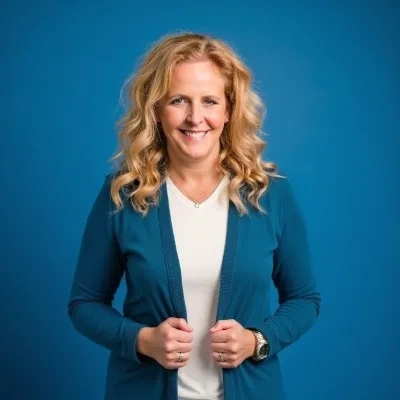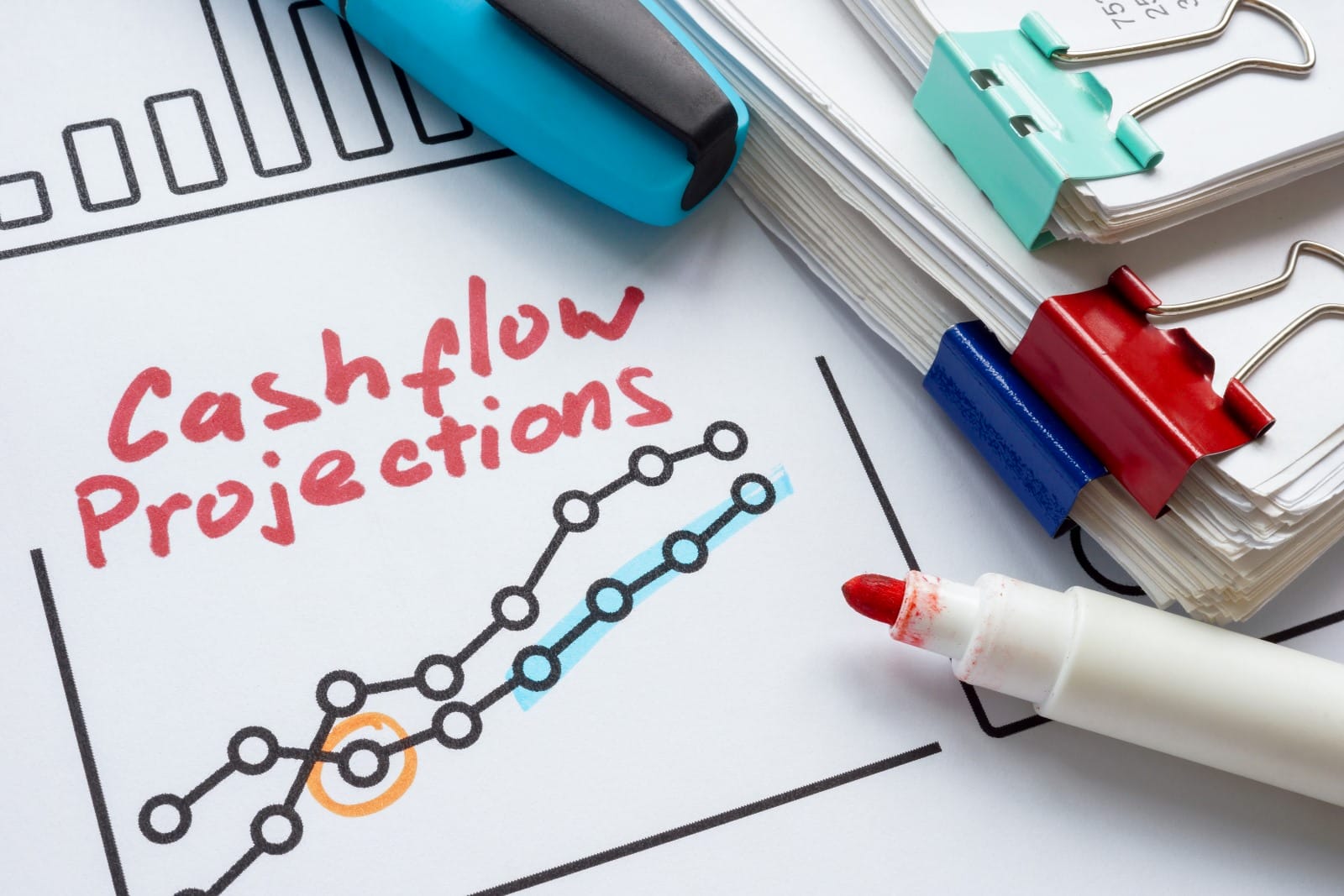Revenue forecasting should be straightforward math. Take last quarter’s numbers, factor in pipeline probability, add some seasonal adjustments, and you’re done.
Except it never works that way.
Ask any finance team about their forecasting accuracy and you’ll get the same sheepish look. The spreadsheets are pristine, the models are sophisticated, but actual revenue has a habit of ignoring the plan entirely. A major client pauses their contract overnight. A competitor slashes prices mid-quarter. An algorithm update tanks your lead flow. Suddenly, your carefully crafted forecast is 40% off target.
This isn’t a problem unique to any single industry – it’s the universal struggle of trying to predict human behavior at scale. But what separates thriving businesses from those perpetually scrambling to explain variance isn’t better crystal balls. It’s building forecasting systems that expect chaos rather than fight it.
We talked to 14 leaders across vastly different sectors to understand how they’ve adapted their revenue tracking and forecasting to survive their industry’s particular brand of unpredictability. Their insights span SaaS platforms wrestling with API usage spikes and user behavior volatility, custom software shops managing enterprise client indecision, law firms tracking billable time leakage, and B2B sales teams building scenario-based pipeline models.
EdTech companies battle learner motivation psychology, Web3 startups navigate regulatory uncertainty, proptech firms endure multi-year sales cycles, and healthcare solutions providers implement tiered probability frameworks. International software services juggle currency fluctuations and client concentration risk.
What emerges isn’t a one-size-fits-all solution, but a collection of battle-tested strategies that work when traditional forecasting methods crumble. From dynamic weekly updates and user segmentation models to real-time usage monitoring and conservative stress-testing, these leaders have learned to treat forecasting as an adaptive system rather than a static prediction.
The common thread running through every story: successful revenue forecasting isn’t about predicting the future perfectly. It’s about building systems resilient enough to handle whatever curveball comes next.
When SaaS Revenue Goes Sideway
One of the biggest headaches in our space (SaaS) is how quickly revenue can change. In digital advertising, a client might pump more money into their campaigns this month because everything’s clicking, then pull back the next because their pipeline slows or they’ve already hit their numbers.
Most SaaS companies run into the same issue. When your income depends on what customers are doing day-to-day, it’s hard to make forecasts you can fully trust. That’s why I think it’s worth investing early in a subscription management tool that doesn’t just spit out numbers but actually helps you predict churn, spot upsell opportunities, and run proper forecasting.
On our side, we still track things live. If a few clients in the same sector start changing budgets, we treat that as a warning sign. By combining these early signals with the data, you’re in a much better position to make changes before the dip shows up in your books.

Gustav Westman, Founder & CEO, Niora AI
Why B2B Sales Needs Three Forecasts
One of the biggest challenges in tracking and forecasting revenue in outbound lead generation is that the sales cycle isn’t linear; it’s unpredictable by design.
In B2B, deals don’t move at a steady pace from first touch to close. Prospects go quiet for weeks, then come back ready to sign. Budgets shift mid-quarter. Decision-makers change roles. All of that makes it difficult to rely solely on historical conversion rates or pipeline velocity models.
The solution starts with acknowledging that a forecast is only as good as the data feeding it. That means tracking more than just “opportunities created” — you need to log leading indicators that reveal momentum, such as the number of buying signals in active accounts, how many decision-makers are engaged, or whether a deal has reached a stage where procurement is involved.
Strong forecasting also comes from scenario planning. Instead of one single projection, build best-case, worst-case, and most-likely scenarios based on current activity. This forces you to stress-test your assumptions and prepare for variability rather than be blindsided by it.
Finally, the human factor matters. Have regular pipeline reviews where sales leaders can pressure-test deals against reality, not just CRM fields. Numbers tell part of the story; context from the front lines fills in the rest.
Forecasting in outbound sales will never be perfectly predictable, but by combining quantitative indicators with qualitative insight, you can create a model that’s both realistic and responsive, and that’s what leadership can actually plan around.

Vito Vishnepolsky, Founder and Director, Martal Group
API Usage Doesn’t Follow Rules
For an API-first SaaS like ours, the hardest part is predicting usage-based revenue. Customers are predominantly on monthly plans, but the bulk of our revenue comes from their actual usage of the API. One month they’re quiet, and then usage triples overnight.
Usage doesn’t necessarily follow patterns, making forecasting challenging. We track account behavior and past activity, but a feature release, a marketing push, or a client’s industry-specific changes throw all our numbers off. The key for us is a combination of client communication, monitoring usage trends in real-time, and staying current on updates across industries.

Geoffrey Bourne, Co-Founder, Ayrshare
Custom Software’s Revenue Forecasting Problem
One of the hardest parts of forecasting revenue in our space — custom software development — is the fact that no two projects are the same. You can scope things out, set milestones, estimate hours, but once you’re in the build phase, things shift. Unlike product-based businesses with more stable sales cycles, we work with enterprise clients who might change direction, priorities shift, or unexpected technical issues pop up. And that has a direct impact on delivery timelines and revenue recognition.
This makes it hard to rely on fixed projections. So we’ve learned to work with more dynamic forecasting methods that take into account probability-weighted deal stages, resource availability, and historical delivery patterns while keeping a close loop between sales, delivery, and finance teams. Forecasts are updated often — sometimes weekly — based on what’s actually happening on the ground.
It’s not perfect, but it keeps us realistic.

Orest Chaykivskyy, Co-Founder & Chief Commercial Officer, Forbytes
When Clients Vanish Into Thin Air
One of the biggest challenges in tracking and forecasting revenue in our industry is the unpredictable rhythm of client decision-making. As a software development company, we don’t sell products off a shelf — we build custom solutions. That means deals can sit in a “maybe” stage for weeks or even months, and then suddenly, a client wants to start tomorrow. Or just as quickly, they go silent.
We’ve had months where the pipeline looked dry on paper, but we still ended up fully booked because past clients returned out of the blue. And then we’ve had times when everything seemed lined up and the projects vanished into thin air.
Trying to forecast with that kind of volatility feels like trying to predict the weather based on a single cloud. You do your best with patterns and intuition, but there’s always an element of surprise. We’ve learned to build flexibility into our planning and stay focused on relationships, not just numbers. That’s been our most reliable compass so far.

Eugene Musienko, CEO, Merehead
Law Firms Hemorrhage Unbilled Hours
We work with a lot of law firms, and a big challenge is making sure every billable activity actually gets tracked and invoiced. Lawyers are extremely busy, and time slips through the cracks a lot.
And they’re not incentivized to stop what they’re doing and track that time perfectly. They’re very understandably focused on serving their clients and winning cases. Multiply that across a team, over weeks, and you’ve got serious leakage in potential revenue. It gets harder to forecast things you never captured.
On top of that, law firms have to deal with IOLTA trust accounting and all the compliance rules that come with it. That adds pressure to have airtight systems, and those systems often lag behind because the firm is focused on client work, not ops.

Paul Carlson, CPA & Managing Partner, Law Firm Velocity
Stop Treating ‘Likely’ as ‘Guaranteed’
I learned this the hard way when two massive contracts made up nearly 70% of our projected quarterly revenue. Both were deep in the pipeline, both had verbal buy-in, and we’d already lined up resources assuming they’d close. Then one got delayed by six months due to internal restructuring on the client side, and the other was pushed to the next fiscal year for budget reasons. Overnight, our actual revenue came in 40% below forecast, not because demand had disappeared, but because timing had slipped beyond our control.
That was the moment I stopped treating “likely” as “guaranteed.” We overhauled our approach, breaking forecasts into tiers:
1. Locked-in recurring revenue – contracts already producing income.
2. Committed but pending – signed deals awaiting kickoff.
3. High-probability pipeline – 80%+ chance but still unsigned.
4. Aspirational – anything below 80%.
This simple change reduced our forecast variance by over 30% in the next two quarters and helped us set more realistic growth targets.
If your industry has long lead times, unpredictable client approvals, or seasonal swings, resist the urge to pad your numbers with “almost closed” deals. Track slippage, create a buffer for delays, and have a plan for when your biggest opportunities get pushed. Forecasting isn’t about painting the rosiest picture; it’s about building a plan you can deliver on, even when reality throws you a curveball.

Gregory Cave, AVP Healthcare Solutions, OSP Labs
SaaS User Segmentation Aids Revenue Prediction
One of the challenges of SaaS products is the varying behavior of users. Some actively use the product, while others only use it from time to time as needed. Also, users can buy a paid subscription at different times: some immediately, some after testing the demo version, and some can think for some time. Some buy a subscription for the company, and some stop using the product. Because of this, it is sometimes an obstacle to predict revenue for the next quarter.
To address this problem, we divided our users into segments based on their field of activity, date of registration/purchase, traffic source, and type of subscription. We do this in order to predict revenue, based on groups that convert faster and seasonality.

Valentin Honcharov, CEO, Claspo
EdTech Churn Volatility Impacts Revenue Forecasting
Revenue forecasting in edtech, particularly for subscription-based business models such as ours, is a nightmare (and quickly so). The greatest risk is the churn volatility based on the psychology of learners. Unlike SaaS for business users, cancellation is based on a lack of motivation, change of job, or even mood. This makes it impossible to always depict with normal retention curves.
We experimented with predictive modeling of usage patterns, quiz scores, and completion rates to indicate possible drop-offs. However, motivation is fickle. A user might complete five modules in a week and disappear the following day without any indication.
It is even more difficult to forecast revenues annually when there is a change in growth channels. A single mention on TikTok can increase signups by 30 percent overnight, but it is not replicable. With a dry funnel, or SEO updates, one algorithm tweak can put you out of business.
At best, it is possible to construct forecasts on core engaged users who log in 3+ times per week over 60 days. The dynamics of that segment can be forecasted. For everything else? You create buffers and remain paranoid.

Mircea Dima, CTO / Software Engineer, AlgoCademy
Web3 Volatility Complicates Revenue Predictions
One of the biggest challenges in the Web3 space is the constant flux caused by rapid technological and regulatory changes. The industry is evolving so quickly that what worked yesterday might not apply tomorrow. Every second brings new protocols, shifts in user behavior, and regulatory updates that can dramatically impact revenue streams. To me, the fragility of the space makes forecasting feel like trying to hit a moving target in the dark.
Web3 is still forming, and many of its systems are experimental. This means traditional forecasting models often fall short because they can’t capture the unpredictability or the impact of sudden policy changes. Moreover, the decentralized nature adds complexity to tracking where and how revenue flows, especially when dealing with cross-border activities and multiple tokenomics models.

Austin Heaton, Head of Content, Rise
Proptech Grapples with Extended Sales Cycles
The toughest part of forecasting revenue in proptech?
Trying to make sense of sales cycles that seem to take forever, and still predicting what happens next.
The real estate industry is notorious for its long transaction timelines, which can often take months and sometimes years to complete.
Monitoring and recognizing demand in these extended sales cycles is challenging enough on its own, but then you add in external factors like changing interest rates or regional variations in the market, and it quickly becomes even more complex. We help homeowners by offering long-term preventative home management, maintenance, and organization solutions based on what stage the homeowner is in, from moving to day-to-day home management and maintenance. Our revenue isn’t tied to one-off transactions but a continuous engagement with homeowners.
When it comes to forecasting, we need to carefully consider externalities that could easily shift homeowners’ decisions.
If a homeowner is moving to a new home and deciding whether to sign up for a service like ours, that decision can be made or broken based on changes in the housing market, shifts in overall financial conditions, and even health or life changes of the homeowner. While it’s important to use past trends, it’s just part of the picture — market sentiment, regulatory changes, and new trends can easily alter demand.

Karen Watts, Founder and CEO, DomiSource
Currency Fluctuations Impact Software Services Revenue
Every year, we build the plan from historical data, and every year, reality breaks the pattern. Long, jagged sales cycles are often dragged down by procurement, security, and legal issues; “closed-won” doesn’t always mean a quick kickoff, and “we’ll start next month” can easily turn into next quarter. Add opaque budgets, tenders, and endless proposal comparisons with shifting criteria and timelines, and even a carefully constructed model starts to drift.
The second factor is revenue concentration. When a meaningful share of revenue comes from a few large clients, their problems become ours instantly. An investor strategy shift, a budget freeze, or organizational changes — and a project can be paused day-of. Yes, you can try to model churn, but large projects are nonlinear: a single pause has a far greater impact than average portfolio noise.
And then there’s currency. We work primarily with the US and Europe, so a significant part of our inflows is in USD and EUR. Financial Forecasts inevitably depend on FX, and this year the USD depreciation noticeably hit our revenue in the reporting currency and our margins. We use constant-currency views to separate operational performance from FX, but cash flow and day-to-day decisions are based on real exchange rates, so we must incorporate this noise into our model and pricing.
Taken together, these three factors — sales volatility, large-account dependence, and FX swings — are blurring predictability the most. We’re adapting by getting more conservative on start dates, maintaining a “minus the biggest client” stress case, and revisiting our pricing and invoicing policies with FX corridors. Most importantly, we accept that in services, forecast accuracy isn’t about a perfect formula; it’s about discipline, early signals, and the ability to adjust fast.

Alexei Malashkevich, CEO, Akveo



